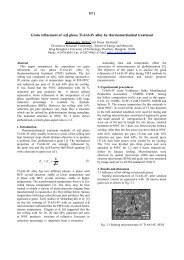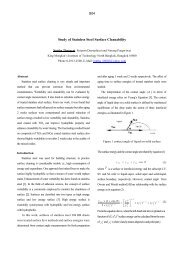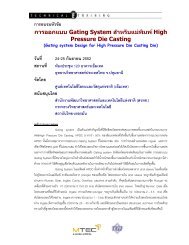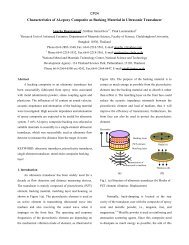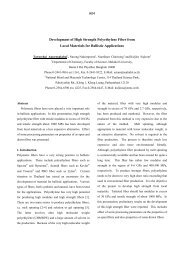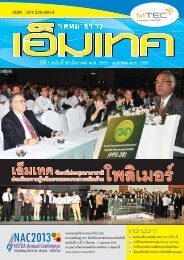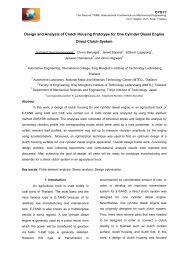EUROPEAN WHITE BOOK
EUROPEAN WHITE BOOK
EUROPEAN WHITE BOOK
Create successful ePaper yourself
Turn your PDF publications into a flip-book with our unique Google optimized e-Paper software.
MAX-PLANCK-INSTITUT FÜR METALLFORSCHUNG STUTTGART48tochromism, optical sensors, etc... Glasses for telecom willcertainly be supported from the telecom side, but opticalglasses for sensors, lasers, and IR technology which havebeen neglected to much until now need to be encouragedto put the European industry at the same level as in theU.S.Research programmes on glass surface need also to be reinforcedfor a better understanding of mechanical, opticalproperties, interfacial problems with other materials. Thisinclude for instance anti-reflecting or hard coatings andall kinds of glasses. Also funding must be saved for exploratoryprojects corresponding to specific niches such as bioglassesor electrochemical glasses for batteries and otherexotic applications.The investigation of glass formation mechanisms from themolten salts and also through sol-gel or gaseous phasesmust be considered as long-term projects that will generatenew ideas for the access to new materials.The glass surface also needs to be the subject of specialattention because it corresponds to the place that interactswith the outside and where defects or anomalies propagateinto the bulk. A good knowledge of surface chemistrycould also help the industry control chemical or mechanochemicalpolishing.From a purely fundamental viewpoint, efforts should bepursued in the understanding of the vitreous transition andthe modelling of glass structure.1.5. Soft Materials and Polymers:The Rise and Decline of Polymer Science & Technology in EuropeP.J. Lemstra | Faculteit Scheikundige Technologie, Technische Universiteit Eindhoven;5612 AZ Eindhoven, The NetherlandsMacromolecular Sciences and Polymer Technology atCrossroads?Europe is facing a major restructuring of its polymer producingindustry with many mergers and a strong decrease in longtermcorporate research within many companies. In combinationwith a strong decrease in the enrollment of students inphysical sciences in the last decade, the future of polymer science& technology in Europe might be at stake. In this article,the situation is analysed with references to the other invitedauthors in this special Magazine of the European PolymerFederation (EPF).Europe has been the cradle for Polymer Science & Technology.At the very start of the last century, Baekeland synthesizedthe first fully synthetic material in Gent (B). PolymerScience was founded in the 1920s when Staudingerpostulated its concept of a polymer chain, consisting ofcovalently bonded monomeric units. The birth of the polymer(plastic) industry took off after World War II and wasboosted by the invention of Ziegler and Natta’s heterogeneouscatalyst systems, in the mid 1950s, enabling theproduction of (linear) polyethylenes and stereoregularpolypropylenes at relatively low pressures and temperatures.In retrospect, the invention of the Ziegler/Natta catalystsystems and the implementation by industry in direct productionis the paradigm of co-operation between academia/governmentalinstitutes with industry. In the 1950swithin 5 years, Montecatini in close co-operation with theuniversity of Milano (Natta c.s.), were able to develop acommercial process to produce ‘isotactic’ polypropylene[1]. The further development of more efficient catalystsystems (by a factor of more than 10.000!) by Montecatini,Montedison, Montell (now Basell) shows the strengthof industrial R&D, viz. optimization to the extreme. Thecurrent production of 30 million tonnes of i-PP per annumat a cost of around 0.5 Euro/kg, viz. 6 kg/capita in the world,shows the tremendous impact of the invention by Nattaand Ziegler.In the 1980s, the novel homogeneous single-site (metallocene-based)catalyst for the production of polyolefins, withenhanced control over the molecular structure, were alsorooted in academia in Europe (Kaminsky/Hamburg; Brintzinger/Konstanz).The impact on the industrial polymerproduction is not yet clear but expectations are runninghigh.







